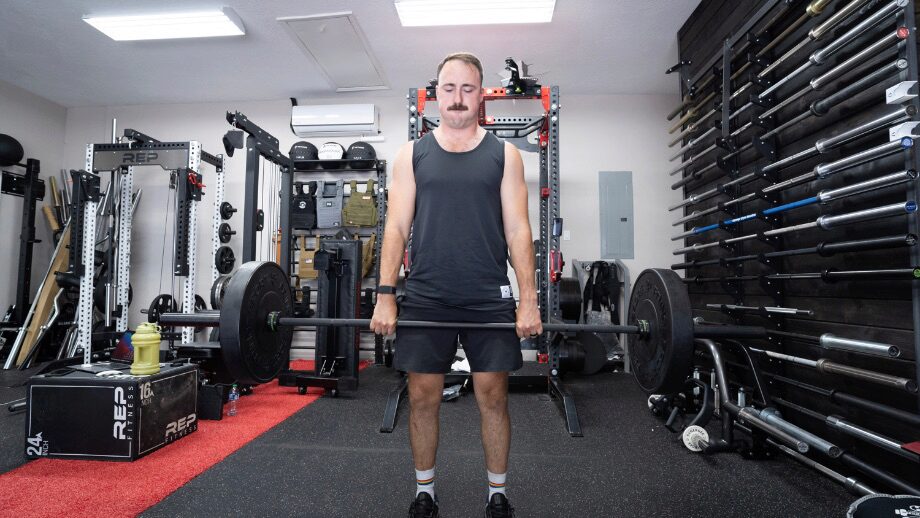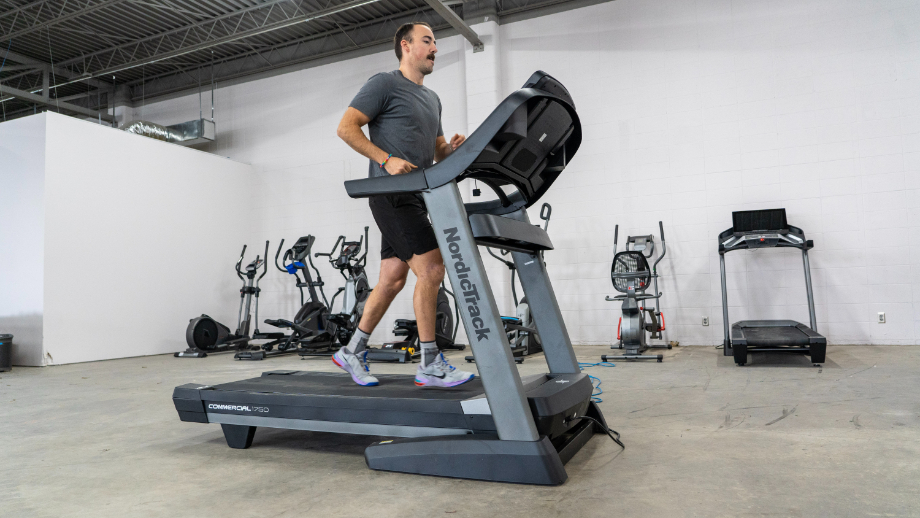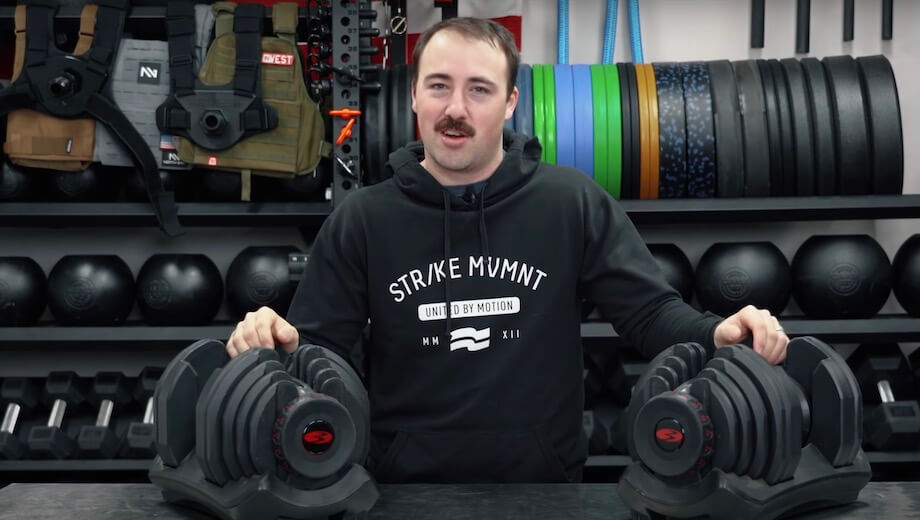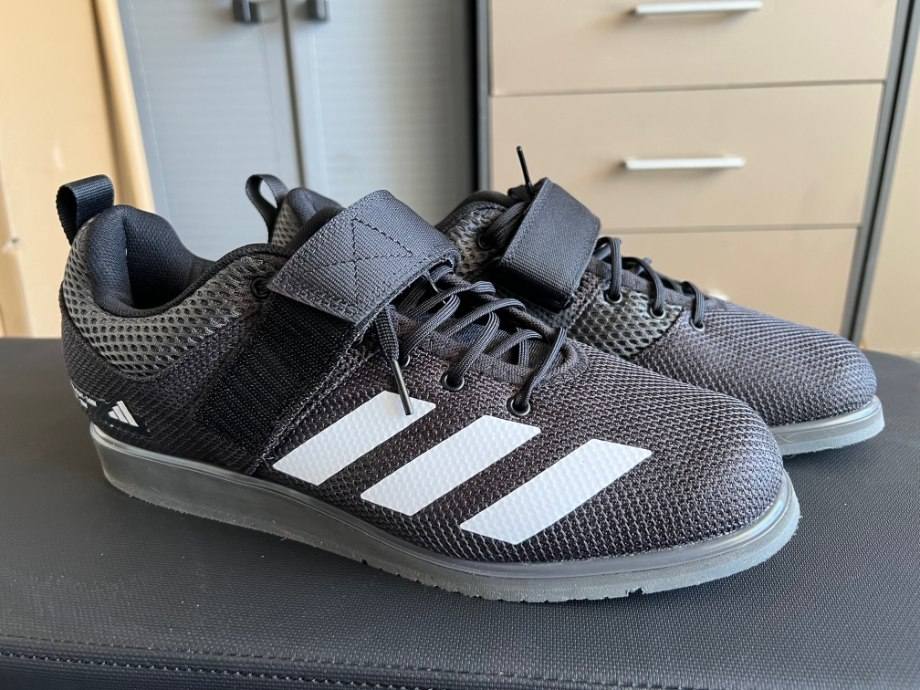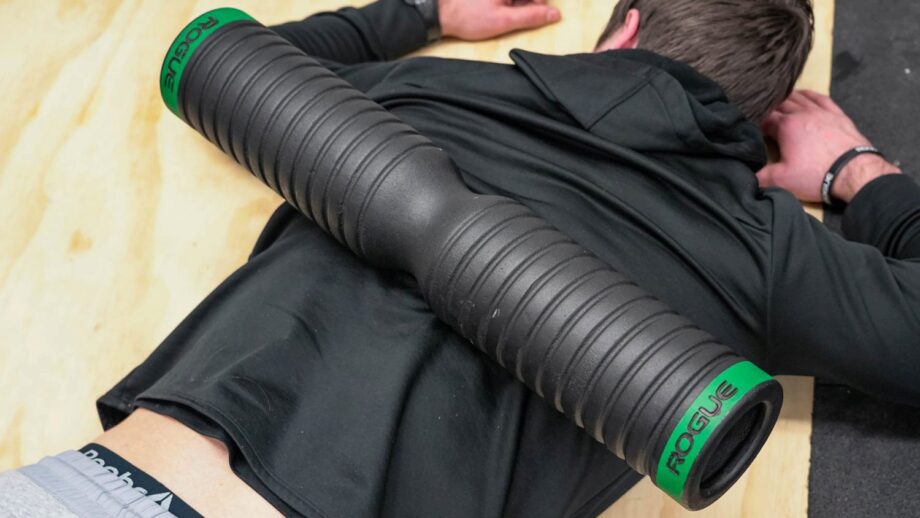Do regular athletes look puny to you? Does your roster of personal heroes include Frank Zane, Ronnie Coleman, and Arnold Schwarzenegger? Do you believe that “bigger is better?”
If you answered “yes” to these questions, then bodybuilding might be for you!
“What is bodybuilding?” you ask.
Bodybuilding is a competitive sport (and lifestyle) that uses heavy resistance training to build and develop the muscles of the human body. Contestants are judged on various factors, including overall muscularity, muscle mass, definition, proportion, and symmetry.
RELATED: How Many Reps to Build Muscle
Competitive bodybuilders are faced with the arduous task of mixing massive muscles and a minuscule body fat percentage, so you’ll need a great training program in order to succeed.
That’s why Certified Personal Trainer and GGR’s very own Amanda Capritto put together some of the best bodybuilding workouts you’ll find anywhere. Check them out below!
How Do Bodybuilders Train?
There are many ways to approach general fitness, but what’s the best approach to bodybuilding? What works best if your goal is to get as buff as humanly possible?
“Bodybuilding workouts revolve around hypertrophy,” says Amanda. “Workouts should promote strength and size gains to every major muscle group in the body.”
Like powerlifting, bodybuilding places a heavy emphasis on resistance training, strength training, and progressive overload in order to accomplish this goal. Powerlifters, however, are primarily concerned with feats of physical strength, whereas bodybuilders prioritize hypertrophy and aesthetics.
According to a 2020 review published in Sports (Basel)1, training programs featuring “a higher intensity load, lower number of repetitions, and longer rest intervals” are ideal for muscular hypertrophy.
“Bodybuilding is not all about size, though,” says Amanda. “It’s about symmetry and proportion too. So, you’ll have to dedicate enough time to each muscle group to promote gains throughout the whole body.”
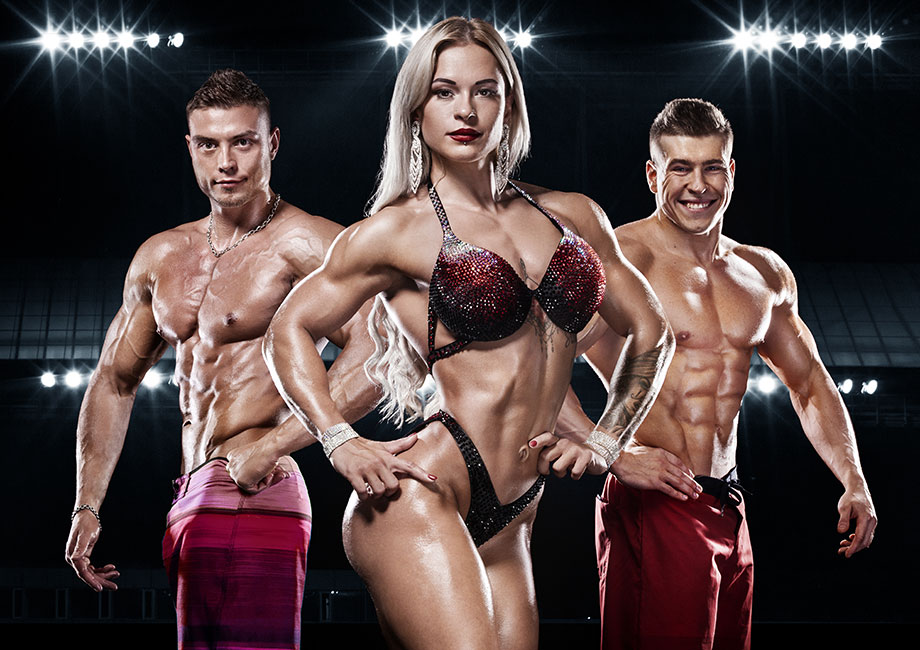
That’s where workout splits come in.
Bodybuilding Workout Splits
The end goal of virtually every bodybuilding program is the same, but there are many roads that’ll take you there. What ultimately works best for you depends on many factors, so you may need to try a few programs before you find your stride.
Here are some of the most common training splits used by bodybuilders worldwide.
Whole-Body Split
A whole-body split trains every muscle group on the same day. Traditional bodybuilders consider this all-inclusive approach the stuff of beginners, but recent studies suggest otherwise.
According to a 2022 study published in BMC Sports Science, Medicine, & Rehabilitation2, both split-body and full-body resistance training programs produce similar improvements to maximal muscle power, explosive muscle strength, and muscle mass in non-resistance trained women.
RELATED: Full Body Workouts Vs Split
So, you could choose to begin a bodybuilding program that uses a whole-body split, but you don’t necessarily have to stray from it as you progress.
“Working out the whole body in one workout will leave you feeling sore,” says Amanda. “For that reason, we recommend waiting 48 hours between sessions to allow your muscles adequate recovery time.”
RELATED: Best Muscle Recovery Supplements
Roughly one exercise per major muscle group is sufficient for full-body splits. For the best results, stick to three sets of each, featuring eight to twelve reps, or five sets using the pyramid scheme of twelve, ten, eight, six, and four reps, respectively.
Push-Pull-Legs
To build muscle with more efficiency, we’ll want to do more than just a single exercise for each main muscle group.
That’s where the push-pull-legs split comes into play. This popular training program stretches the workload over three days to allow for greater volume and intensity during each session.
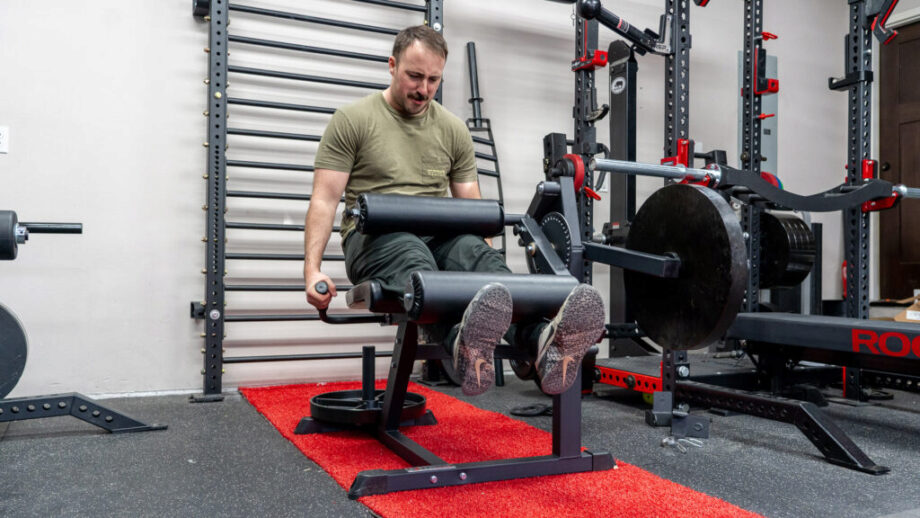
The first training day targets your pushing muscles, namely the chest, shoulders, and triceps. Day two, likewise, places the emphasis on pulling muscles, or the back and biceps specifically.
RELATED: This Trainer-Created Push-Pull Workout Will Beef Up Your Back And Shoulders
On the third day, we have everyone’s favorite—leg day.
Day three features pushing and pulling movements, like leg extensions and leg curls, to provide activation to every major lower body muscle group.
“Dedicating a day each for pushing and pulling exercises is intuitive because most compound exercises already recruit muscles from synergistic muscle pairs,” says Amanda. “Think about the bench press; it’s not just for your pecs. It hits the triceps, serratus anterior, and your front delts, too.”
So, putting together a comprehensive workout routine that activates synergistic muscle pairs in the same session is a time-efficient and effective way of muscle building.
We recommend selecting three exercises for each muscle group, and varying your rep scheme to include low-rep and moderate-rep sets as needed. Three sets per exercise ought to do.
Upper-Lower
An upper-lower split spreads the exercises over the span of two days. On day one, exercises should target the upper body, including your chest, back, arms, and shoulders. Then, on day two, the focus is on lower body muscles like the quads, calves, hamstrings, and glutes.
The biggest benefit of splitting your training into an upper-body workout and lower-body workout is that you can spend more time—ultimately performing more work—on each muscle group.
RELATED: Upper-Body Workout At Home
“Aim to perform two exercises per muscle group if you’re using an upper-lower split,” says Amanda. “One exercise will be used for strength gains; the other for muscular hypertrophy.”
So, your first exercise should use heavy weights, specifically a weight you cannot move for more than six or eight reps, whereas your second exercise will fall back on the tried-and-true eight to 12 rep scheme known for maximizing hypertrophy.
And, as with other training splits, three sets of each exercise is par for the course.
Four-Day Split
Splitting the body into four distinct days of training really kicks things into another gear.
“Push-pull-leg splits condense the training into three days by combining your chest, triceps, and shoulders,” Amanda says. “A four-day split gives your shoulder muscles their own dedicated training day.”
Because of this adjustment, we can increase the volume and perform between four and five sets of each exercise. Spreading out the workload across several days in this fashion also allows for heavy strength training using compound movements then reaching full muscle exhaustion by adding isolation exercises as a workout finisher.
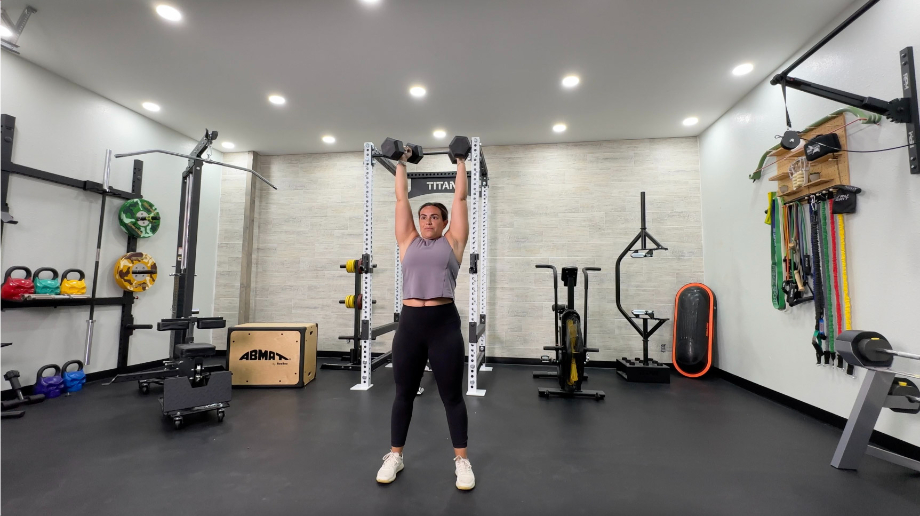
An example of this would be performing the machine shoulder press and dumbbell Arnold press on shoulder day, then really getting a good pump with some sets of front and lateral raises.
RELATED: Shoulder Workouts with Dumbbells
Five-Day Split
The five-day split is undoubtedly the most challenging, now giving a dedicated day to your chest, back, shoulders, and legs, leaving a fifth day for your arm muscles exclusively.
“You’ll still get some activation of the triceps on chest day and biceps on back day,” says Amanda, “but giving your arms a whole training session allows for some really great gains.”
Arm day is typically a free weight feast, allowing you to get in ample sets of bodybuilder favorites like barbell curls, concentration curls, triceps extensions, and many, many more arm-building movements.
RELATED: Best Curl Bars
This heavy duty weight training program should be performed at high intensity, but leaving two dedicated rest days on the schedule encourages adequate recovery. Because of this, you’ll always walk into your next training session feeling your best.
Bodybuilding Programming: Off-Season and Show Prep
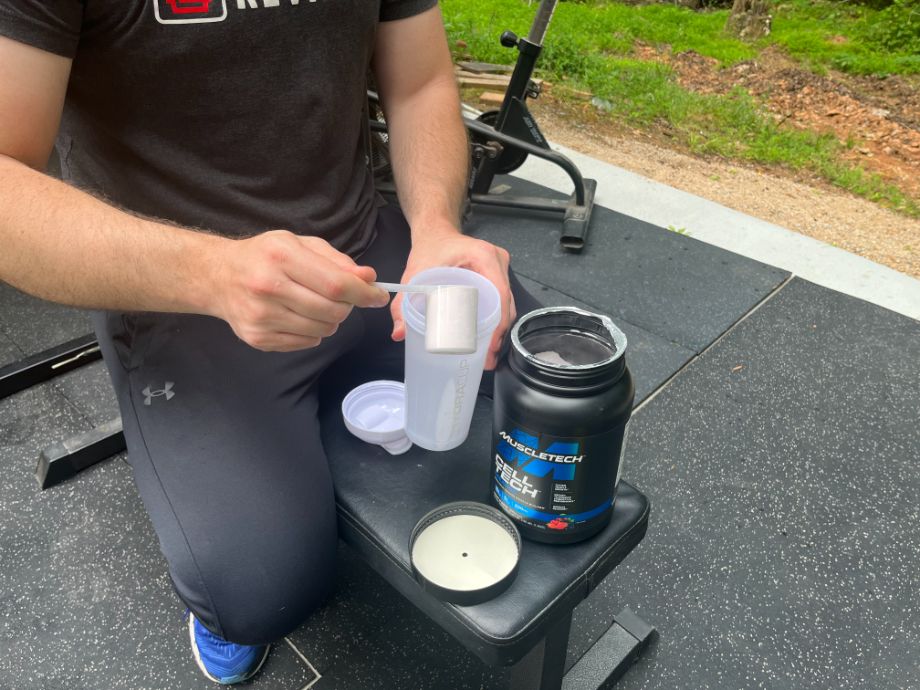
Some bodybuilders boast a body fat percentage below 5%, which is incredibly difficult to achieve and equally difficult to maintain. So, it makes total sense that bodybuilders wouldn’t worry about prioritizing fat loss until it’s absolutely necessary.
The off-season is, therefore, all about muscle growth. Bodybuilders achieve this through hard work, smart programming, and a diet designed for bulking up.
RELATED: Our Favorite Protein Shakes for Bulking
According to a 2019 review published in Sports (Basel)3, a bodybuilder’s protein intake might range from 1.6 grams to 2.2 grams per kilogram of bodyweight, with the number of calories based on the individual and their specific metabolic needs.
The review further notes that supplements like “creatine monohydrate, caffeine, beta-alanine, and citrulline malate might yield ergogenic effects that can be beneficial for bodybuilders.”
RELATED: Best Supplements For Muscle Growth 2023
Show prep, on the other hand, is all about torching body fat while retaining those precious muscle gains you worked so hard for in the first place.
According to a 2014 study published in the Journal of the International Society of Sports Nutrition4, the goal is to finetune your caloric intake so you are never losing more than 0.5% to 1% body fat each week. A 2021 study published in Nutrients5 further supported this methodology, noting this approach as optimal for retaining muscle while burning fat.
It’s a slow process, meaning you’ll need to start weeks in advance to succeed. The best way to determine exactly when to start is by first getting an accurate measurement of your current body fat percentage, then setting a timeline based on that figure.
Bodybuilding Back and Biceps Workout
| Exercise | Sets | Reps |
| Deadlift | 3 to 5 | 2 to 5 |
| Barbell Bent-Over Row | 3 to 5 | 2 to 5 |
| Lat Pulldown | 3 to 5 | 8 to 12 |
| Barbell Biceps Curl | 3 to 5 | 8 to 12 |
| Single-Arm Dumbbell Row | 3 to 5 | 8 to 12 |
| Preacher Curl | 3 to 5 | 8 to 12 |
Bodybuilding Chest and Triceps Workout
| Exercise | Sets | Reps |
| Barbell Bench Press | 3 to 5 | 2 to 5 |
| Incline/Decline Bench | 3 to 5 | 2 to 5 |
| Cable Machine Flyes | 3 to 5 | 8 to 12 |
| Weighted Triceps Dips | 3 to 5 | 8 to 12 |
| Cable Kickbacks | 3 to 5 | 8 to 12 |
| Skull Crushers | 3 to 5 | 8 to 12 |
Bodybuilding Quads and Calves Workout
| Exercise | Sets | Reps |
| Back Squat | 3 to 5 | 2 to 5 |
| Front Squat | 3 to 5 | 2 to 5 |
| Machine Leg Extension | 3 to 5 | 8 to 12 |
| Machine Calf Raise | 3 to 5 | 8 to 12 |
| Leg Press | 3 to 5 | 8 to 12 |
Bodybuilding Glutes and Hamstrings Workout
| Exercise | Sets | Reps |
| Romanian Deadlift | 3 to 5 | 2 to 5 |
| Bulgarian Split Squat | 3 to 5 | 2 to 5 |
| Nordic Curl | 3 to 5 | 8 to 12 |
| Weighted Lunges | 3 to 5 | 8 to 12 |
| Machine Leg Curl | 3 to 5 | 8 to 12 |
Adding In Cardio
Nothing is quite as divisive in bodybuilding as the use of cardio.
On the one hand, it’s a proven method of burning calories and fat, becoming an asset during the show prep phase. On the other hand, it takes time away from weight training, so you’re spending time and energy on an activity that doesn’t result in more muscle gains.
“Cardio can be helpful during show prep, but heavy weightlifting should always remain the priority,” says Amanda. “The biggest factor in lowering your body fat will ultimately be your diet.”
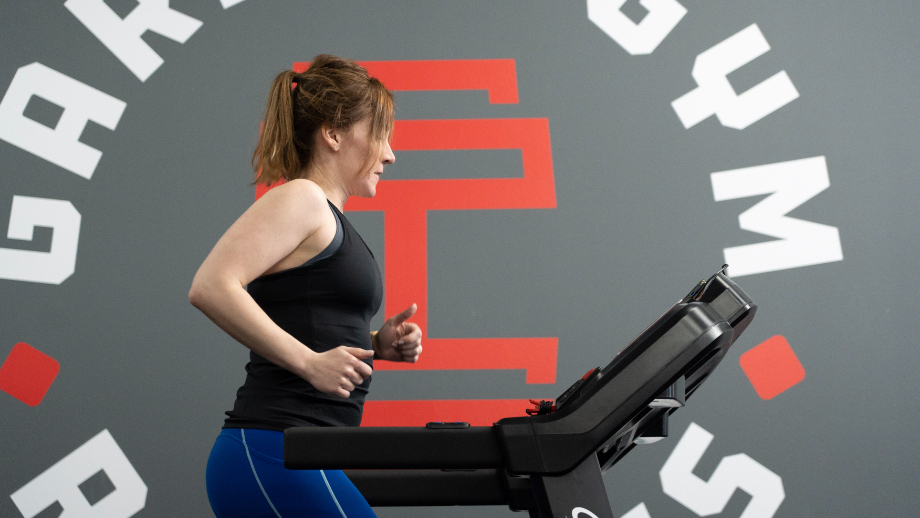
If you do plan to use cardio, a 2015 study published in the Journal of Sports Medicine and Physical Fitness6 recommends performing it at “the lowest frequency and duration possible while achieving sufficient fat loss” to avoid interfering with strength and size gains.
“Walking uphill, cycling, and rowing are all great choices,” Amanda says. “Sprinting and HIIT are also good, but you’ll need more recovery time if your cardio is done at a high intensity.”
RELATED: Cardio Vs Weights For Weight Loss
For that reason, reserve any higher-intensity bouts of cardio for the training days that fall just before a rest day. That way, you’ll return feeling fresh, recovered, and ready to give it your all.
Bodybuilding Workouts: Final Thoughts
No one ever said bodybuilding was easy.
It takes dedication, hard work, and lots of specialized knowledge in order to optimize your approach and get the best results.
We can’t turn you into the next Mr. Olympia or Ms. Rising Phoenix, but we can provide the knowledge and workout plan that will help you get there.
By incorporating the exercises and workout programming described above, you’ll be well on your way to becoming a great bodybuilder in due time.
Good luck, fitness fam!
Bodybuilding Workouts: FAQs
Do bodybuilders work out every day?
Bodybuilders work out most days, usually ranging from three to five days each week.
For the best bodybuilding results, it’s important to take rest days and allow your muscles to make a full recovery before targeting them again.
How many sets and reps do bodybuilders do?
The number of sets and reps depends on the purpose of the exercise. This includes some low-rep sets using very heavy weights and some moderate-rep sets using moderate resistance.
The most common structure is three sets of between eight and 12 reps, as muscular hypertrophy is typically the greatest at this threshold.
Do bodybuilders do any cardio?
Bodybuilders love avoiding cardio during the off-season, or “bulking season,” as many endearingly refer to it.
During show preparation, however, cardio provides various benefits, enhancing weight loss effects as bodybuilders get into their “show shape.”
How many hours of training per week do bodybuilders do?
Many fitness enthusiasts have heard the legend of Arnold Schwarzenegger training for five hours daily (split between two sessions) to get into his contest-winning physique.
Our bodybuilding workouts will rarely take you longer than an hour per session for a total of five hours weekly to see results, provided you exercise with intensity and practice perfect form.
References
1. Alves RC, Prestes J, Enes A, et al. Training Programs Designed for Muscle Hypertrophy in Bodybuilders: A Narrative Review. Sports (Basel). 2020;8(11):149. Published 2020 Nov 18. doi:10.3390/sports8110149
2. Pedersen H, Fimland MS, Schoenfeld BJ, et al. A randomized trial on the efficacy of split-body versus full-body resistance training in non-resistance trained women. BMC Sports Sci Med Rehabil. 2022;14(1):87. Published 2022 May 14. doi:10.1186/s13102-022-00481-7
3. Iraki J, Fitschen P, Espinar S, Helms E. Nutrition Recommendations for Bodybuilders in the Off-Season: A Narrative Review. Sports (Basel). 2019;7(7):154. Published 2019 Jun 26. doi:10.3390/sports7070154
4. Helms ER, Aragon AA, Fitschen PJ. Evidence-based recommendations for natural bodybuilding contest preparation: nutrition and supplementation. J Int Soc Sports Nutr. 2014;11:20. Published 2014 May 12. doi:10.1186/1550-2783-11-20
5. Ruiz-Castellano C, Espinar S, Contreras C, Mata F, Aragon AA, Martínez-Sanz JM. Achieving an Optimal Fat Loss Phase in Resistance-Trained Athletes: A Narrative Review. Nutrients. 2021;13(9):3255. Published 2021 Sep 18. doi:10.3390/nu13093255
6. Helms ER, Fitschen PJ, Aragon AA, Cronin J, Schoenfeld BJ. Recommendations for natural bodybuilding contest preparation: resistance and cardiovascular training. J Sports Med Phys Fitness. 2015;55(3):164-178.


